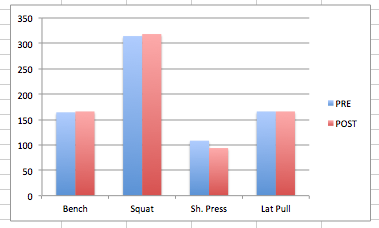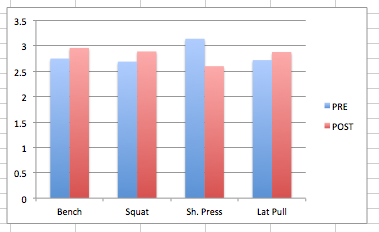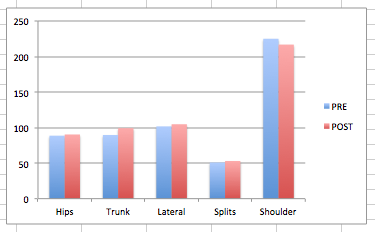by Blake Surina
Abstract: The study looked at a number of physiological performance variables from the Tacoma Firefighters (n=362 , n=342) on two separate evaluations performed at the Exercise Science Center of Fircrest Washington, 14.4 years apart. Assessments included Aerobic Capacity, Body Composition, Pulmonary Function, Flexibility and Strength, and were converted into a 0.00 – 4.00 Grade Point Average (GPA) by comparing the firefighters to a reference population of 23,000 age, sex and race matched subjects. Data showed that the average Tacoma Firefighter in 2017 had aged 2.0 years, gained 4.7 lbs, but had less body fat (19.4% vs 17.6%) than the fire department of 2003. In general, most of the fitness components showed slight to moderate increases in scores, with the only major losses noted in shoulder strength and flexibility.
The Exercise Science Center has taken Tacoma Fire Departments physical performance data from 2003 (n=362), and again from 2017 (n=342), an average time span of 14.4 years. The report is divided into five sections: 1) Descriptives, 2) Body Composition, 3) Cardiorespiratory Body, 4) Strength, and 5) Flexibility.
Descriptives:
Since 2003 the departments has aged 2.0 years on average, (42.4 to 44.4 years). The average bodyweight of a firefighter has increased 4.7 lbs., with no change noted in height. BMI of the department has increased from 27.9 to 28.6. An average increase in weight of a normal population is 0.7 lbs, and an increase in BMI of 0.1 in 2.6 year older subjects. It should be noted that Body Mass Index (BMI) measures height to weight ratio, and does not distinguish the compositional makeup of the weight, (i.e. muscle or fat).
| Table 1: Descriptives |

Resting heart rate decreased approximately 1.3 beats per minute, with a noted loss in blood pressure from 130/77 mm/Hg to 123/71 mm/Hg. Oximetry values remained unchanged. The heart feeds itself between heart beats and takes out how much oxygen it needs based on the work of heart rate and the work of blood pressure. In summary, the heart requires less oxygen and has more time to feed itself. We see these as positive changes in heart health.
Body Composition:
A noted decrease in body fat of 1.8% was noted in the average firefighter (19.4% vs 17.6%), in spite of an average weight gain of 4.7 lbs (198.7 lbs vs 203.7lbs), since 2003. The average population would increase body fat by .4% when aging from 41.9 to 44.4 years.
Somatotyping, which assigns a score of 1 through 7 on fatness (endomorphy), muscularity (mesomorphy), and skinniness (ectomorphy) was used to verify the increase of muscle mass and the decrease in body fat changes. Endomorphy decreased from 4.24 to 3.55, Mesomorphy increased from 5.90 to 6.21, and Ectomorphy decreased from 1.16 to 1.03. The average firefighter gained weight, but appears the weight was gained in lean tissue, and a subsequent loss of body fat.
| Table 2: Cardiorespiratory – Body Composition |

Ideal body weights were calculated by averaging the body weight where optimal % body fat is from their present weight (optimal % body fat is equal to -1.5 standard deviation from the population norm), and the body weight at optimum BMI weight (Optimal BMI is equal to 22 for females and 23 for males). Current ideal body weights are 4.7 pounds heavier, (176.8 lbs versus 181.5 lbs), which coincided with the departments average weight gain since 2013.
Cardiorespiratory:
Aerobic capacity was assessed with a bicycle ergometer that standardizes the workloads over a span of 14.4 years. Assessing with a treadmill, weight changes of the subjects would affect the workloads, whereas; a bicycle ergometer would have an identical resistance from test to test. In essence, the aerobic capacity is determined by estimating the maximal work (resistance in watts) the firefighter does in relation to their allometrically scaled body weight, based from submaximal efforts.
The average firefighter increased the submaximal workloads from 177.6 watts to 195.7 watts, and increased the average submaximal heart rates from 134.5 to 135.4 beats per minute. Factoring in the change in body weight, the increase in age, and the increase in heart rate had the minimal effect of decreasing the aerobic capacity from 12.1 MET’s to 12.0 MET’s. Most of the minimal decrease in the firefighters was due to the increase in the age of the average firefighter of 2.5 years. Despite the slight decrease in MET’s, the bicycle aerobic GPA increased from 2.50 to 2.53.
| Table 3: Cardiorespiratory – Aerobic Capacity and Pulmonary |

Pulmonary data indicate that the Forced Expiratory Volume in 1 second (FEV1.0) and the Forced Vital Capacity (FVC) scored improved in the last 14.4 years. FEV1.0 looks at the flow rates, which correlates to the diameter of the airways (i.e. asthma), and the FVC’s look at the change in lung capacity. FEV1.0 increased from a 1.50 GPA to a 1.90 GPA, and the FVC increased from a 1.36 GPA to 1.89 GPA. Currently, the average airway diameter for a Tacoma Firefighter is 99.0% and the lung capacity (vital capacity) is 98.9% of predicted.
Summarizing all of the components that make up the cardiorespiratory fitness, (i.e. body composition, aerobic capacity, pulmonary measurements) the average grade increased in the last 14.4 years from a 2.36 GPA to a 2.68 GPA. The largest increase in the Total Fitness Grade Point Averages in Tacoma City Firefighters in the last 14.4 years have come from better body compositions scores. Grade Point Averages for body compositions have increased from 2.43 GPA to a 3.07 GPA. One factor that may account for the positive changes noted in body composition is the department’s emphasis placed on good nutrition and better more healthful food choices at the station meals. This may spill over into better meal choices at home as well.
Strength:
Firefighters were evaluated isokinetically at 20 inches per second on Bench Press, Squat, Lat Pulldown and Shoulder Press for a 5 repetition maximum. Increases in strength were noted in the last 13 years in the Bench Press (+1.7 lbs), Squat (+4.0 lbs), with no change in the Lat Pulldown (0.0 lbs). Shoulder Press showed a rather large decrease of -14.5 lbs. Interestingly, a survey of injuries found that the number one injury was shoulders for firefighters, (Beaton 2003). Grades were computed in a GPA format based on the age, weight, sex and the weight lifted. Averaging the GPA’s all 4 lifts, the strength of the average department firefighter has improved from a 2.80 to a 2.84 Grade Point Average over the last 14.4 years.

Figure 1: Average weight in lbs lifted from 5 repetition max efforts of selected lifts, tested isokinetically at 20 inches per second. Chart shows Tacoma Fire Department changes over a span 14.4 years.

Figure 2: Grade Point Averages (0.00 to 4.00 GPA scale) for selected lifts based on the sex, age, and allomtrically scaled weight of firefighters. Chart shows Tacoma Fire Department changes over a span 14.4 years.
Flexibility:
Flexibility was measured using a Leighton Flexometer gravity inclinometer, to assess the range of motion in degrees of : 1) Lower back and hamstrings (Hip), 2) Thoracic spine (Trunk), 3) Lateral Spine, (Lateral), 4) Hip Abduction (Splits), and 5) Shoulder Flexion Extension (Shoulder).

Figure 3: Range of Motion in degrees for selected movements using a Leighton Flexometer. Chart shows Tacoma Fire Department changes over a span 14.4 years.
Firefighters increased their average overall flexibility from a 2.21 GPA to a 2.44 GPA over the last 13 years. Shoulder Flexion and Extension showed the only loss in range of motion, (-8.2 degrees).
Figure 4: Grade point Averages (0.00 to 4.00 GPA scale) for selected ranges of motion, based on the sex, and age of the firefighters. Chart shows Tacoma Fire Department changes over a span 14.4 years.
Total Fitness Score:
Total fitness was given one number on a 0.00 to 4.00 GPA scale that incorporates all of the components of fitness. Cardiorespiratory fitness, and Strength fitness scores were weighed at 40% of the Total Fitness Score Grade, and Flexibility was weighed the remaining 20%. Tacoma Fire Department over the last 14.4 years has increased their Total Fitness from a GPA of 2.51 to a GPA of 2.70.
Conclusions:
The Tacoma Fire Department in 2017 appears to be in better shape, as a whole, when compared to the Tacoma Fire Department in 2003. The biggest change for the department appears to be the noted increase in lean body mass and the subsequent loss in percent body fat. The largest area of concern was the lowered strength and flexibility measurements that were shown in the shoulders for the Tacoma firefighters.
Thank you to Deputy Chief Faith Mueller and Battalion Chief Dave England for their help in securing the grant and logistical support, and Dawn Callier who spent many hours compiling the data to make the results of this study possible.
